
Ruling the Late Game: Meet the Super Strong Assassins in Mobile Legends
In the exciting world of Mobile Legends, Assassins are like the speedy ninjas, quick and sneaky, ready to change the whole game. Today, let’s talk about the late-game action and get to know the top 5 Assassins who become absolute legends after the first 15 […]
Others
ROG Ally: Unleash the Gaming Power at a Steal
The price of the amazing handheld game console that everyone has been talking about, the Asus ROG Ally, has recently gone down at Best Buy. The news is very exciting. Just think about this: you can get it for $400 instead of $500, a huge […]
Uncategorized
Apex Legends Art Mystery: Is it AI or Just Artistic Tricks?
Hey there, gaming pals! Apex Legends and EA are in the spotlight, and it’s all about some possible AI art in the pictures for the Final Fantasy VII team-up. Let’s dive into why folks are talking about these images and figure out if there’s some […]
Uncategorized




Ruling the Late Game: Meet the Super Strong Assassins in Mobile Legends
In the exciting world of Mobile Legends, Assassins are like the speedy ninjas, quick and sneaky, ready to change the whole game. Today, let’s talk about the late-game action and get to know the top 5 Assassins who become absolute legends after the first 15 […]
OthersIn the exciting world of Mobile Legends, Assassins are like the speedy ninjas, quick and sneaky, ready to change the whole game. Today, let’s talk about the late-game action and get to know the top 5 Assassins who become absolute legends after the first 15 minutes.
Getting the Late Game Vibe in Mobile Legends
Before we get into the cool stuff, let’s quickly talk about early, mid, and late-game in Mobile Legends. Late-game is when things get really interesting, usually after 15 minutes. Heroes tagged as late-game are like superheroes – they get stronger and more powerful during this time.
The heroes we’re talking about might seem regular or not that tough in the beginning, but when the late game hits, they turn into real heroes.
1. Nolan: The New Assassin Sensation
Nolan is the new kid in the Land of Dawn, and he’s making a Mobile Legends big splash. With a whopping 90% win rate in the Mythic tier, Nolan is the star during the Draft Pick phase. While he needs to farm well in the early and mid-game, once the late game arrives, Nolan becomes a total game-changer. His moves can take down Mages, Marksmen, and even Fighters. In Season 31, Nolan is considered a META hero with super cool skills.
2. Hayabusa: The Shadow Ninja
Hayabusa is the Assassin with a killer move called Shadow Kill. He secures his spot as a late-game assassin by farming quickly with his third skill and stacking up power with the first one. With items that reduce cooldown, Hayabusa can use Shadow Kill a lot. His moves and ultimate become super powerful in the late game, making it easy to take down Marksmen and Mages. A well-equipped Hayabusa can even give Tanks a hard time with his main items.
3. Saber: The Super Precise Assassin
Saber is like the sniper of Assassins in Mobile Legends. He can lock onto one target and take them down. Although he might find it tough in the early game, once he gets his main damage items, Saber can be a hero-wrecker with his second skill and ultimate. Saber becomes a strong force in late-game team fights, capable of quickly defeating enemy heroes.
4. Joy: The Explosive Attacker
Joy might not have the biggest damage in the late game, but her explosive moves and combos can quickly disable important heroes. A skilled Joy player, with quick reflexes, can mess up the enemy formation easily. The immunity effect gives Joy a big advantage in battles. If you master her second skill, Meow, Rhythm of Joy, she can totally change the SLOTJARWO game in the late phase.
5. Lesley: The Sharpshooting Assassin
Lesley is a hybrid hero, both a Marksman and an Assassin, making her special. Even though she’s commonly seen in lower tiers, Lesley stays competitive in Season 31’s META. In the late game, Lesley can skip boots and buy two Blade of Despair items. Once she’s all set up, Lesley can bring down enemies in just two or three hits. Her late-game power makes her a hero to keep an eye on.
Final Thoughts: Late Game Heroes Rule
So, there you go – the top 5 Assassins that become super strong in the late game of Mobile Legends. If you’re planning to climb up the ranks, these heroes could be your secret weapons. Jump into the late-game action, and let these Assassins lead you to victory!

ROG Ally: Unleash the Gaming Power at a Steal
The price of the amazing handheld game console that everyone has been talking about, the Asus ROG Ally, has recently gone down at Best Buy. The news is very exciting. Just think about this: you can get it for $400 instead of $500, a huge […]
UncategorizedThe price of the amazing handheld game console that everyone has been talking about, the Asus ROG Ally, has recently gone down at Best Buy. The news is very exciting. Just think about this: you can get it for $400 instead of $500, a huge $100 savings! It’s kind of like getting higher levels in your favorite game, but it really does happen.
ROG Ally, Powerful Gaming, Anywhere You Go:
The ROG Ally isn’t like other handhelds. No, it’s a full Windows 11 computer that you can hold in your hand. And that means you can play well-known games like Cyberpunk 2077 and Elden Ring anywhere you want. You can play indie favorites, old PC gems, and even work or work on artistic projects. It’s not just for the big games, though. There are really no limits to what could happen.
Visuals That Wow:
And let’s talk about how good your games will look. The 1080p touchscreen is not only super vibrant but also crazy smooth with a 120Hz refresh rate. Whether you’re exploring magical lands or battling demons in SLOT GACOR, every moment is like a visual feast for your eyes.
Comfortable Controls for Epic Gaming:
Asus knows how important comfort is. With triggers, buttons, and thumbsticks that feel just right, the ROG Ally is easy to use. Also, guess what? And then, since the analog sticks can be taken off, you can get that beloved console-style setup.
More Than Just Gaming:
But here’s the cool part – the ROG Ally is not just for games. It runs on Windows 11, so you can use it for work stuff too. Emails? Check. Writing a document? Check. You can even stream movies, browse the web, and hook it up to a bigger screen for a desktop-like setup.
Why This Deal is a Game-Changer:
Getting the ROG Ally for $400 is not just a deal; it’s an invitation to a whole new gaming universe. Here’s why you should grab this offer:
- Total Versatility: It’s not just for gaming. You can do work, enjoy entertainment, or just explore endless possibilities.
- Awesome Performance: The processor and graphics make sure even the latest games run super smooth.
- Stunning Visuals: The screen is top-notch, making every game look fantastic.
- Comfort Matters: Designed for long gaming sessions, so you’re always comfy.
- Windows 11 Magic: Unlocks a world beyond gaming – productivity, creativity, and more.
Join the Gaming Revolution:
Don’t miss out on this adventure! Best Buy won’t keep this deal forever, so grab your chance to jump into the gaming world with the ROG Ally. At $400, it’s not just a discount; it’s like getting a ticket to a gaming paradise.
Quick tip: Check for any cool accessories or cases that can make your ROG Ally experience even better. And then, happy gaming!

Apex Legends Art Mystery: Is it AI or Just Artistic Tricks?
Hey there, gaming pals! Apex Legends and EA are in the spotlight, and it’s all about some possible AI art in the pictures for the Final Fantasy VII team-up. Let’s dive into why folks are talking about these images and figure out if there’s some […]
UncategorizedHey there, gaming pals! Apex Legends and EA are in the spotlight, and it’s all about some possible AI art in the pictures for the Final Fantasy VII team-up. Let’s dive into why folks are talking about these images and figure out if there’s some AI magic behind it.
Art and AI in Apex Legends: Mixing It Up
Guess what? Apex Legends wanted to add some spice to the Final Fantasy VII Rebirth event. Sounds cool, huh? Well, not so fast. Sharp-eyed artists on Twitter noticed something a bit off in the promo pics. It seems like AI might have played a role in making the art, and that’s got the gaming community talking.
Why the Buzz About AI?
No official talk from EA or Apex Legends yet, but people are buzzing about some clues in the artwork. Hands, those tricky things, seem to be giving it away. AI struggles with hands because there isn’t a ton of stuff for it to learn from. Check out Valkyrie in her Yuffie-style pose – those fingers look like they’re doing a dance of their own. And oh boy, her right hand has this melting look, a classic AI oopsie as it tries to mix things up. Even the belts on her chest got caught up in the melting mess.
Wraith’s Tifa skin promo art has the same hand hurdles. Sneaky AI, right?
The Yuffie Costume Puzzle in Apex Legends
Now, let’s chat about Wattson’s moment in the spotlight. She’s showing off an alternate Yuffie costume in Apex Legends, taking a cue from Final Fantasy’s style. Yuffie, a cool character from the Final Fantasy Remake DLC, starts with this Mog-themed cloak. And guess what? Mogs are like Final Fantasy superstars. But here’s the twist – the AI might have had a bit of trouble figuring out this tricky reference when making Wattson’s look.
Once Yuffie ditches the cloak, her famous green crop top and shorts steal the SLOTBANGJAGO show. Now, for an AI, this means there’s not a lot of material to use, and the hood design of Yuffie’s cloak? Not your usual fashion, huh? The “Mog” on her sleeve? Looks more like an AI’s take on abstract art than a human touch. And don’t get us started on Wattson’s backpack – Final Fantasy-themed, sure, but with USB ports? That’s a modern twist for you. Oh, and that melting AI look? It’s back, showing up on Wattson’s gear too.
The Mystery Continues
So, are these quirks in the art a sign of AI doing its thing, or are the artists just adding their special touch? No official word from EA or Apex Legends just yet, but the gaming community is talking. Whether it’s the work of a digital artist or a sneaky AI, one thing’s clear – these images have sparked a lively chat in the gaming world. Get ready for more twists and turns in this art adventure!

Big Changes in NYC Schools’ Money
Big changes in NYC schools. The Mayor of New York City, Eric Adams, is making big money changes in the city’s schools. He wants to cut about $550 million from the school budget this year. These changes will affect many different school programs and jobs […]
NewsBig changes in NYC schools. The Mayor of New York City, Eric Adams, is making big money changes in the city’s schools. He wants to cut about $550 million from the school budget this year. These changes will affect many different school programs and jobs that help students.
Quick Changes and What They Mean
The changes will happen soon and could affect programs like free preschool and a program called Summer Rising. Some of the savings will come from not hiring new people for some jobs in the schools. This might mean fewer people helping in the offices and supporting the schools.

Saving Money and What It Affects
The city is also trying to spend less money on some staff members. This could save about $86 million, but it’s not clear who exactly this might affect.
What’s Coming Next
The Mayor has asked all city departments, including schools, to spend 5% less money this year. And there might be more cuts in January and in 2024. This could mean that schools will have to cut about $2.1 billion altogether. This is a lot of money, especially because the whole school budget is about $37.5 billion.
Next Year’s Plans
In the next school year, there might be $120 million less for a program called Universal Pre-K. This program helps many 3- and 4-year-old kids. There are some empty spots in the program, so they might remove some of those spots.
Concerns and Questions
Some people are worried that these changes might make it harder for kids and families to get the help they need. Some special programs might have less money, like ones that help kids learn computer science or community schools.
Summer Program Changes
A popular program called Summer Rising might have less money too. This could mean shorter days or no programs on Fridays for some kids. Many kids liked this program last year, but it might not be the same this time.
Different Opinions
The Mayor thinks these changes are necessary because the city needs to save money. But some people, like teachers, think it’s not a good idea because the city has more money than they expected.
Worries for Some Kids
Some groups are worried that kids who need extra help might not get it because of these changes. They are especially worried about kids with special needs or kids who don’t have a permanent home.
Schools and Money Problems
These changes are happening when the city won’t get as much extra money from the government as it did before. Some schools already had to give back money because they didn’t have as many students as they thought they would.
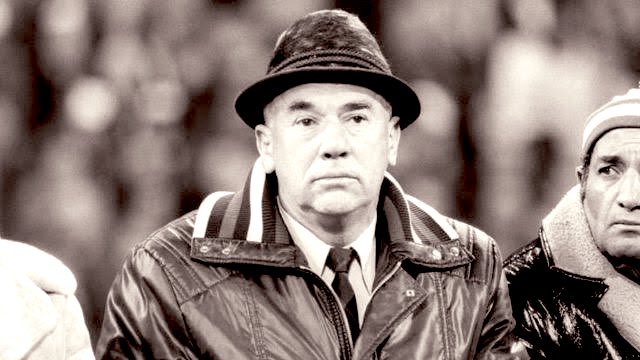
The Extraordinary Legacy of Viktor Maslov
The Legacy of Viktor Maslov Viktor Maslov contributions to football extended beyond the 4-4-2 formation. His innovative tactics paved the way for modern collective and creative team play, much like the style of Pep Guardiola, and his approach to pressing defense was the precursor to […]
BiographyThe Legacy of Viktor Maslov
Viktor Maslov contributions to football extended beyond the 4-4-2 formation. His innovative tactics paved the way for modern collective and creative team play, much like the style of Pep Guardiola, and his approach to pressing defense was the precursor to tactics like Gegenpressing, popularized by Jurgen Klopp. Viktor Maslov remains the father of the 4-4-2 and the progenitor of the Gegenpressing football style.
The 4-2-4 Football Trend
In the 1950s and early 1960s, the football world witnessed a surge in teams using the 4-2-4 formation. This trend was inspired by the success of the Brazilian National Team under the guidance of Vicente Feola, who dominated the 1958 World Cup with this formation. The 4-2-4 formation was seen as the ideal strategy for winning matches during that era, with two wide wingers making a team’s attacking power formidable.
The Global Influence of the 4-2-4 Formation
Teams from all over the world emulated Brazil’s playing style, including the Soviet Union. Gavriil Kachalin, the coach of the Soviet National Team, also adopted the 4-2-4 formation for the 1962 World Cup. Even after Kachalin was replaced by Konstantin Beskov in 1962, the Soviet National Team continued to stick with the 4-2-4 scheme.
The Emergence of Viktor Maslov Innovation
While the success of Brazil’s 4-2-4 formation was undeniable, its predictability became a concern as more teams adopted it. Viktor Maslov recognized this and took a bold step by introducing the 4-4-2 formation. Maslov’s innovation involved moving two of the wingers back to the midfield, creating a four-player midfield – the largest in the world at that time, as other teams continued to rely on the 4-2-4 formation.
Football Philosophy of Viktor Maslov with 4-4-2
Maslov’s 4-4-2 formation prioritized the creativity of midfielders. The two central midfielders had distinct roles: one focused on defensive duties to protect the four defenders, while the other played as the playmaker, orchestrating the attack. The two wingers who dropped into the midfield acted similarly to playmakers but from the wing positions. This increased the team’s ball distribution and creative gameplay.
Balancing Defense and Attack in 4-4-2
Maslov’s 4-4-2 had exceptional balance in both attacking and defending. He shied away from the traditional zone marking defensive strategy and instructed his players to press their opponents man-to-man when not in possession. This approach was unusual at the time, as most teams relied on a defensive waiting strategy within their own zones.
The Physical and Nutritional Emphasis
Recognizing that pressing defense required more physical effort, Maslov employed a fitness coach to ensure his players were well-conditioned. He also paid attention to player nutrition and post-game muscle recovery, which are now standard practices in modern football.
The Origin of 4-4-2 and a Cold War Conspiracy
While there is a conspiracy suggesting that 4-4-2 was actually an English creation, attributed to their 1996 World Cup victory under coach Alf Ramsey, this idea emerged due to the tension of the Cold War, where the Soviet Union was seen as an enemy by England. However, Viktor Maslov is recognized as the true pioneer of the 4-4-2 formation. As a modern-era English football journalist said, “4-4-2 was first discovered by Maslov.”
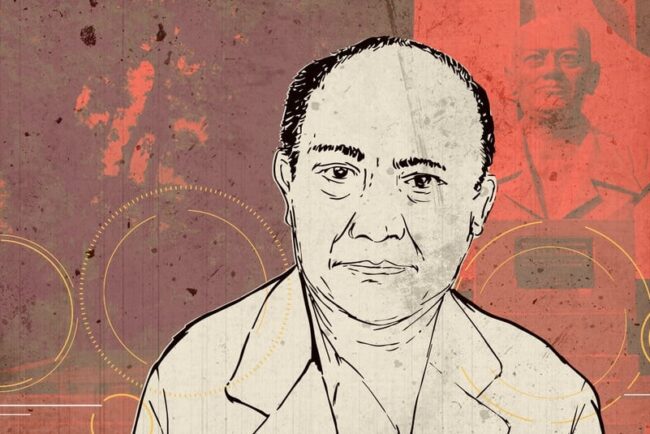
Sam Ratulangi: Linking Minahasa Nationalism and Indonesia
Sam Ratulangi Learning Abroad in a Nutshell So, this dude named Sam Ratulangi from Minahasa decides to fly all the way to the Netherlands to chase some knowledge. Now, he’s got these fancy credentials from the Dutch East Indies, kind of like a high school […]
BiographySam Ratulangi Learning Abroad in a Nutshell
So, this dude named Sam Ratulangi from Minahasa decides to fly all the way to the Netherlands to chase some knowledge. Now, he’s got these fancy credentials from the Dutch East Indies, kind of like a high school diploma, you know. But when he hits up Vrije Universiteit Amsterdam, they’re like, “Nah, no math degree for you, dude.” Tough break, right? But our man Sam, he’s not one to throw in the towel. A Dutch socialist, a pal of R.A. Kartini, steps in, pulls some strings, and bam! Sam’s on a transfer to Zurich University. Long story short, Sam becomes the first Indonesian with a Ph.D. in math. Beat that! koin303
Back in the Day in Minahasa
So, picture this—Sam’s born into this fancy family in Tondano, North Sulawesi. Minahasa, yeah, it’s been rocking since the 18th century. Before that, it was known as Landstreek van Manado. Some deal in 1679 with folks from North Sulawesi, kings, and the Dutch East India Company (VOC) went down to kick out the Spaniards. Guess who won? VOC. Minahasa was basically theirs.
Minahasa’s Makeover: Thanks, Christianity and Dutch Rules
Fast forward to the Dutch East Indies era, and boom! Nationalism’s the new cool thing, especially in Minahasa. Scholars say it’s a mix of everyone getting into Christianity and the Dutch throwing their rules around. From 1831 to 1891, folks in Minahasa are converting to Christianity like it’s a trend, thanks to the Dutch missionary squad known as Nederlandsch Zendeling Genootschaap (NZG). NZG’s all about preaching unity among the Minahasa peeps.
Smart Moves and Snobbish Vibes in Minahasa
Minahasa, during Dutch rule, wasn’t your average Joe. By 1930, more than half of them could read, doing fancy jobs like clerks, plantation bosses, and even assistant missionaries. The Dutch bigwigs called them “Eurasians in the Indies” because they had it good.
But here’s the twist—this exclusivity vibe was feeding into Minahasa’s own brand of nationalism. Sam and the gang dream of subtly taking over Sulawesi, blending in like pros. Life’s good, but there’s tension bubbling underneath, leading to groups like the Minahasa Union. coin303
From the Minahasa Union to the Minahasa Council
Picture 1919. The Minahasa Union throws this Gelijkstelling petition at the Dutch government, yelling for equality. Guess what? It works! The Minahasa Council (Minahasa Raad) is born. 1927 rolls around, and Sam Ratulangi’s like, “Hold my diploma,” as he starts his own party, the Minahasa Unity (Persatuan Minahasa). But it’s like a shooting star; it shines but doesn’t stick around.
Minahasa Unity: Playing Both Sides
Fast forward to 1934-1938. Half of the Minahasa Council is wearing the Minahasa Unity jersey. Things get hazy between local and national movements. In 1939, the Minahasa Unity joins forces with the big shots—the Indonesian Political Federation (GAPI).
Uncertainties and Sam Ratulangi Federalism Talk
Sam Ratulangi brings out the big guns, pushing for federalism to patch things up between Minahasa and Indonesian nationalism. But the Minahasa Unity does a weird dance, rejecting Unity of Indonesian Political Organizations (PPPKI). Why? They’re not vibing with how PPPKI deals with the Dutch government and some nationhood drama.
Sam Ratulangi Legacy and Today’s Struggles
Even after Sam Ratulangi kicks the bucket in 1949, his ideas linger. The Minahasa Unity throws shade at the idea of putting “Islamic sharia” in Pancasila during talks about Indonesia’s independence. In 2006, there’s talk about Minahasa independence, all about freedom to practice religion without the drama. And guess what? As of May 13, 2017, folks in Minahasa are still throwing a party at the airport, telling a high-ranking dude to hit the road.
Conclusion: Minahasa’s Cool, Complicated Story
Mix in Christianity, Dutch rules, school smarts, and local pride, and you get this wild Minahasa nationalism. They’re like the rebels of Indonesia. Sam Ratulangi’s idea of federalism? It’s like the OG solution. Minahasa’s got this crazy history, still figuring out who they are, and Sam’s legacy? It’s alive and kicking.

Melanie Perkins: Canva Simplifies Complex Designs
Canva is the world’s most valuable female-led startup at $40 billion. The idea occurred to Melanie Perkins in college when she met Cliff Orbecht, her future husband. Born in Perth, Western Australia, on May 13, 1987, Perkins was drawn to design and technology early on. […]
BiographyCanva is the world’s most valuable female-led startup at $40 billion. The idea occurred to Melanie Perkins in college when she met Cliff Orbecht, her future husband. Born in Perth, Western Australia, on May 13, 1987, Perkins was drawn to design and technology early on.
She drew, designed posters, and laid out magazines in her free time. In addition, she was enterprising. She sold scarves to Perth stores and markets at 14.
“I never forget the freedom and excitement of business building. In an Entrepreneur interview, she explained that helped establish Canva.
Melanie Perkins, the Background
Her graphic design passion grew in high school. She swiftly learned Adobe Photoshop and Illustrator.
Her graphic design talents improved as she designed for pals. Melanie studied graphic design and communication at the University of Western Australia after high school.
At 19, she worked part-time teaching design to other students on campus in 2006. Students complained about Adobe and Microsoft software’s expense and complexity during this time.
Melanie and Obrecht also sold temporary tattoos and souvenirs at university and neighbourhood festivals. They considered making future design utilisation easy and accessible.
A year later, they created Fusion Books, a yearbook design app for schools and students. Student-friendly drag-and-drop tools were employed.
Melanie made her mother’s living room an office. Fusion Books was Canva’s precursor. Many schools welcomed this move, crowning Melanie as Australia’s most successful young female entrepreneur.
She needed more than Fusion Books. She intended to establish a universal graphic design platform for business cards, logos, invites, posters, presentations, resumes, and other sophisticated projects. Anyone without graphic design skills can access it all.
Not accepted by 100 investors
Canva employs 4,000 people across many offices in Australia, the Philippines, China, and the US. Since 2017, they have been profitable and launched AI to compete with Google, Microsoft, and Adobe.
Investor finance was Melanie’s first challenge while launching Canva. Before receiving investment from top investors, she and Obrecht were denied by over 100 investors.
Convincing users that Canva was a user-friendly graphic creation platform was another challenge. Melanie realised many found graphic design tough and confusing.
She met Silicon Valley investor Bill Tai at a Perth technology conference in 2010. She presented her concept in San Francisco during this gathering.
Many investors doubted Canva’s potential or thought the graphic design market was saturated. Some thought her concept was too risky.
But she persisted. Melanie improved her pitch, strengthened Canva’s value proposition, and met more investors. She succeeded by overcoming rejections with perseverance and using feedback to strengthen her proposal.
Melanie noted, “The sheer number of rejections at the early stage meant I had to try harder and refine my strategy,” in a Blackbird Venture sponsored lecture.
Canva’s early development investors first took notice of her concept in 2012. Matrix Partners, InterWest Partners, 500 Startups, Bill Tai, Lars Rasmussen, and Ken Goldman (CFO Yahoo) invested $3 million.
Technology advisor Lars Rasmussen, a Google Maps founder, helped build a team using this cash. Cameron Adams, who built Google’s interface, joined Canva to improve its technology shortly after.
Canva launched in 2013 and gained over 750,000 users by year’s end.
Canva hired former Apple chief evangelist Guy Kawasaki in 2014. With Canva’s rapid growth, Kawasaki helped it expand abroad. Over 330,000 people created 100,000 new designs per week in the same year.
Rapid Growth During Pandemic
Canva stands out from other graphic creation platforms with its free access and premium packages for fonts and design elements. Adobe Photoshop costs almost $3,500 for a year, or $314 per month.
Another benefit is that Canva offers thousands of templates and design elements for project collaboration, making creative collaboration easier.
These features have made Canva one of the most popular online graphic design platforms for people of all backgrounds.
Canva, Australia’s first unicorn company, raised $40 million from Sequoia Capital and Blackbird Ventures in 2018.
They originally acquired Zeetings the same year to produce the best presentation product. With a billion designs on its site, it achieved a milestone.
Canva purchased Pexels and Pixabay in 2019–2020 to help users create design content with free pictures during the COVID-19 epidemic.
Investment value reached $60 million in 2020, valuing Canva at $6 billion. Melanie Perkins became Australia’s youngest billionaire with $1.3 billion.
Canva raised $200 million with a $40 billion valuation in 2021 when people worked from home due to the epidemic. Melanie offered $12 billion—30% of the company’s funds—to fight extreme poverty.
Time has called Canva the most influential startup this year for boosting design.
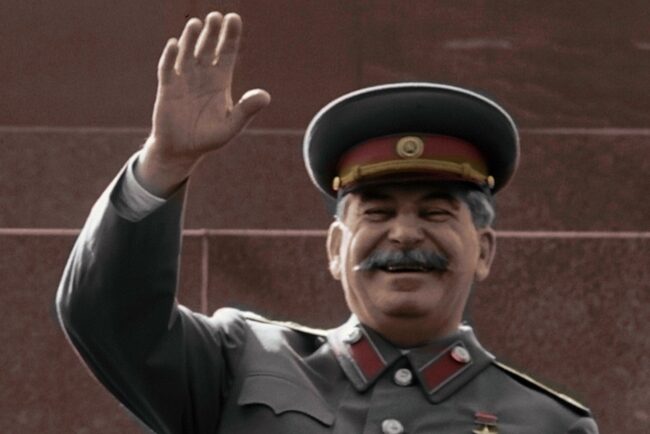
Joseph Stalin: The Brutal Leader of the Soviet Union
Joseph Stalin: Rise in Russia 70 Years After His Death In Moscow on March 9, 1953, seventy years after his shocking death four days before, Joseph Stalin put to rest. Joseph Stalin, who was known for being cruel, has become more popular in Russia again […]
BiographyJoseph Stalin: Rise in Russia 70 Years After His Death
In Moscow on March 9, 1953, seventy years after his shocking death four days before, Joseph Stalin put to rest. Joseph Stalin, who was known for being cruel, has become more popular in Russia again recently. What is the reason for this revival?
After having a stroke, Joseph Stalin died on March 5, 1953. He was 74 years old. There was a four-day national grief time after his state funeral on March 9, 1953, even though it was very cold outside—as low as -18 degrees Celsius. A huge number of people braved the cold to pay their respects.
A lot of Russians still think of him as the “Father of the Nation.” At the moment, President Vladimir Putin is working hard to show that Stalin beat Hitler in World War II.
The Effects of Joseph Stalin Tough Rule
The cruel rule of Joseph Stalin is a stain on history. It took the Soviet leaders that came after Stalin a few years to break away from the “cult of Stalin’s personality.” It wasn’t until the 1960s that he was publicly named a very bad killer.
The man known as “the steel” was born in Georgia as Iosif Dzhugashvili and took over as leader of the Soviet Union in 1923. Historians say that during Stalin’s 30 years in power, up to 40 million people killed by his reign of evil. For political reasons, people were put to death, put in camps where they had to work, or killed. People were sent away in large groups, and many thinkers, including famous writers, singers, artists, scientists, and directors, were called “enemies of the people” and tortured or killed.
From less Stalinism to more Stalinism
“Maybe it sounds strange, but the death of Stalin is the first thing I remember from my childhood,” says Irina Sherbakova, co-founder of the Nobel Peace Prize-winning human rights group Memorial. The researcher, now 72 years old, recalls vividly learning about Stalin’s demise in 1953: “I was only a toddler at the time.” “I felt like a child, especially when I felt how cold it was and how much fear there was—those last few months of Stalin’s rule were very oppressive.”
At first, Joseph Stalin’s body put in a tomb next to Lenin’s in Moscow’s Red Square after it embalmed. But in 1961, it buried outside the walls of the Kremlin so that no one could see it.
After that, the Soviet Union started a process called “de-Stalinization.” A huge number of statues and shrines to Stalin destroyed, melted down, hidden, or thrown into rivers in the Soviet Union and other Eastern Bloc country.
“Russia’s Last Trump Card for Propaganda”
It seemed impossible for a long time that Stalin’s cult would come back to life. But this trend has come back, starting with the taking over of Crimea in 2014. “Monuments to Stalin put up since about 2014, when Crimea annexed,” says Irina Rastorgueva, a culture writer and Russian author who lives in Berlin with Sherbakova.
In honor of the 80th anniversary of the end of the Battle of Stalingrad, the newest statue to Stalin revealed on February 1, 2023. These statue take a place in Volgograd, which use to be Stalingrad.
They will not let “certain countries today want to erase the memory of the great victory of the Soviet army,” said the mayor of Volgograd during the opening event.
According to Irina Rastorgueva, the new Stalin statue shows how the government “interprets history from the top down.”
Vladimir Putin is trying to recover Joseph Stalin’s reputation as a leader who stood up to Nazi Germany and made the Soviet Union a world power.
Irina Rastorgueva says, “The victory in World War II is the last thing that brings people together; it is Russia’s last propaganda trump card.”
She thinks that neo-Stalinist groups will keep going as long as Vladimir Putin is in charge. She predicts that eventually “Stalinism” and “Putinism” will be cover in Russian textbooks.
However, we must accept blame for the current situation in Ukraine first. If we don’t, we will pay a heavy price. It will cost a lot.
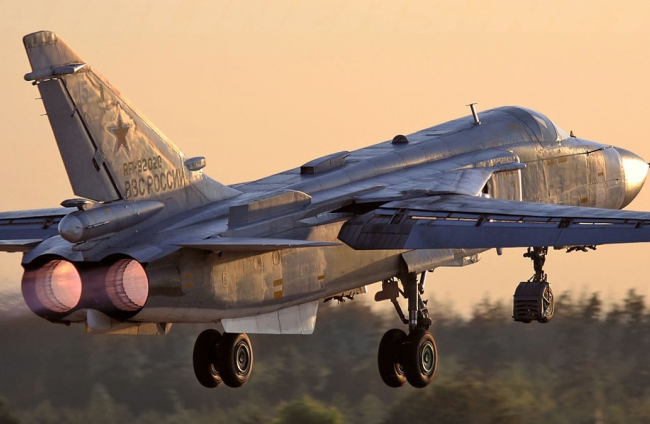
Russian Fighter Jet Crashes During Training Exercise
In a recent training exercise gone awry, a Russian fighter jet tragically crashed during what was supposed to be a routine flight. The incident unfolded in the Volgograd region, approximately 400 kilometers (250 miles) to the east of the Ukrainian border. While the Russian Ministry […]
NewsIn a recent training exercise gone awry, a Russian fighter jet tragically crashed during what was supposed to be a routine flight. The incident unfolded in the Volgograd region, approximately 400 kilometers (250 miles) to the east of the Ukrainian border. While the Russian Ministry of Defense has confirmed the crash, it has remained tight-lipped about the fate of the pilot involved. A rescue helicopter has been swiftly dispatched to the crash site, but the situation remains tense and uncertain.
The Training Flight
The ill-fated Su-24 aircraft was engaged in a scheduled training flight over the Volgograd region when the accident occurred. It was a seemingly routine exercise, yet it ended in disaster. The aircraft, reportedly not carrying any weapons, plummeted to the ground in an uninhabited area. The exact cause of the crash is yet to be determined, and investigators will be working diligently to piece together the sequence of events that led to this tragic outcome.

A String of Incidents
This unfortunate incident is not an isolated one. The Russian military has been grappling with a series of accidents and mishaps, casting a shadow over its operational efficiency and safety protocols. These incidents have coincided with Russia’s heightened military activity in the region, notably its offensive operations in Ukraine, which began in February 2022.
July Tragedy
In July of the same year, another training flight ended in tragedy when a pilot lost his life. The accident occurred over the Sea of Azov, not far from Ukraine. The loss of a pilot during a training mission is a sobering reminder of the inherent dangers faced by military personnel, even during routine exercises.
October’s Grim Reminder
Another dark chapter unfolded in October 2022 when a Su-34 fighter jet crashed into a residential apartment building in the city of Yeysk, Russia. This city is located near the Ukrainian border. The consequences were dire, with 15 individuals losing their lives in the tragic incident. The crash not only highlighted the risks faced by military personnel but also underscored the potential collateral damage that such accidents can inflict on innocent civilians.
Investigating the Su-24 Crash
As the Russian military grapples with these incidents, a thorough investigation into the Su-24 crash will be essential. The goal is to uncover the root causes, identify any systemic issues, and prevent similar accidents in the future. The Russian Ministry of Defense, along with aviation experts and accident investigators, will meticulously examine the circumstances leading up to the crash.
Operational Risks and Challenges
These accidents serve as a stark reminder of the operational risks and challenges inherent in military activities. Training exercises are an integral part of maintaining readiness and effectiveness, but they also carry inherent dangers, especially when involving high-performance aircraft. The loss of life and equipment in these incidents is deeply tragic and raises questions about the safety measures and protocols in place.
Conclusion
As Russia’s military continues its activities, particularly in the context of the ongoing conflict in Ukraine, addressing these safety concerns and minimizing risks should remain a top priority. The tragic Su-24 crash and other recent incidents underscore the critical importance of constant vigilance and stringent safety measures to protect the lives of military personnel and civilians alike.
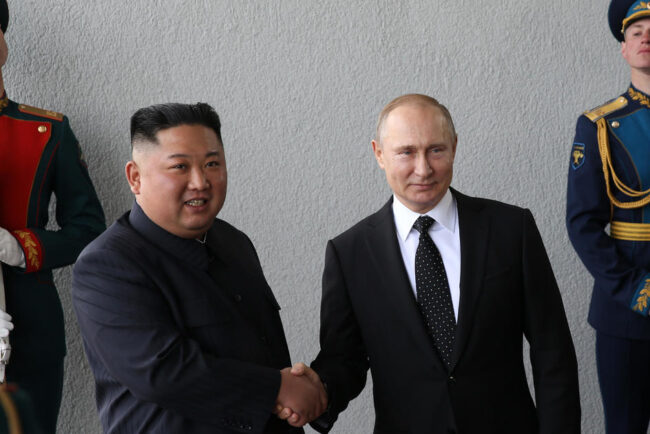
US Warns North Korea and Russia Over Weapons Activity
Escalating tensions on the global stage have brought the United States into a critical diplomatic position, issuing warnings to both North Korea and Russia regarding their recent weapons activity. As geopolitical dynamics evolve, these warnings carry significant implications for regional and international stability. North Korea’s […]
NewsEscalating tensions on the global stage have brought the United States into a critical diplomatic position, issuing warnings to both North Korea and Russia regarding their recent weapons activity. As geopolitical dynamics evolve, these warnings carry significant implications for regional and international stability.
North Korea’s Missile Tests Raise Concerns
North Korea’s recent missile tests have raised concerns among international observers. The United States’ warning emphasizes the need for diplomatic engagement and a peaceful resolution to prevent further destabilization in the region.
Russia’s Aggressive Posture in Eastern Europe
The warning to Russia addresses the nation’s aggressive posture in Eastern Europe, particularly its military build-up near Ukraine. The United States is urging Russia to de-escalate tensions and engage in constructive dialogue to prevent further conflict.
Diplomacy as a Path to Stability
In an era marked by geopolitical uncertainties, diplomacy remains a crucial tool for maintaining stability and preventing conflicts from escalating. The United States’ warnings underscore the importance of diplomatic solutions to complex international issues.
International Alliances and Cooperation
The United States’ warnings also reflect the importance of international alliances and cooperation in addressing global challenges. Multilateral efforts are essential to finding peaceful resolutions to complex issues that affect multiple nations.
Balancing Act in Foreign Policy
The warnings to both North Korea and Russia highlight the delicate balancing act required in U.S. foreign policy. Addressing the concerns of multiple nations while promoting peace and stability is a complex task that requires diplomatic finesse.
Global Implications
The repercussions of these warnings extend beyond North Korea and Russia. They signal the United States’ commitment to upholding international norms and addressing threats to global security, setting a precedent for its role in global affairs.
Avoiding Escalation
In a world where conflicts can quickly escalate, the United States’ warnings serve as a cautionary measure to prevent further destabilization. They underscore the importance of de-escalation and the pursuit of peaceful solutions to international disputes.
The Role of Diplomacy in Crisis Management
Diplomacy is a critical tool for crisis management in an increasingly interconnected world. The United States’ warnings to North Korea and Russia exemplify the importance of diplomatic channels in addressing complex and potentially volatile situations.
Conclusion
The United States’ warnings to North Korea and Russia underscore the complexity of modern geopolitics and the importance of diplomacy in maintaining international peace and stability. As the world watches these developments, the path forward hinges on diplomatic efforts and multilateral cooperation to address the underlying issues and prevent further escalation.










